Bruges is a city that inspires gothic responses. With its gargoyles and belfries, its sombre canals and tolling church bells, it provided the perfect setting for Georges Rodenbach’s protagonist to mourn his spouse in the Symbolist novel of 1892 Bruges-la-Morte: ‘Bruges was his dead wife. And his dead wife was Bruges. The two were united in a like destiny. It was Bruges-la-Morte, the dead town entombed in its stone quais, with the arteries of its canals cold once the great pulse of the sea had ceased beating in them.’ Conservative Brugians at the time – Catholics in particular – weren’t thrilled with the picture Rodenbach painted, which they felt didn’t chime with the Christian image they wished to project. But, proving there’s no such thing as bad publicity, tourist numbers were swelled by the book, many of whose readers were compelled to experience the mist-soaked melancholy of the place for themselves.
There are echoes of the 1970s film version of Bruges-la-Morte, as well as Nicolas Roeg’s Don’t Look Now, in Martin McDonagh’s pitch-black comedy from 2008, In Bruges. On one level, you can see why the local tourist board might have felt ambiguous about the film. Having been struck by the infernal images of Hieronymous Bosch’s Last Judgment in the Groeningemuseum, Ray, one of the film’s guilt-ridden Irish protagonists, later decides that hell might in fact be ‘the entire rest of eternity spent in fuckin’ Bruges’. But Ray is no sightseer, and for his partner in crime – and the camera – the city looks every inch a fairy tale (albeit with all the gothic and noirish elements that genre entails). And, as with Rodenbach’s novel, In Bruges has only added to the city’s appeal for tourists.
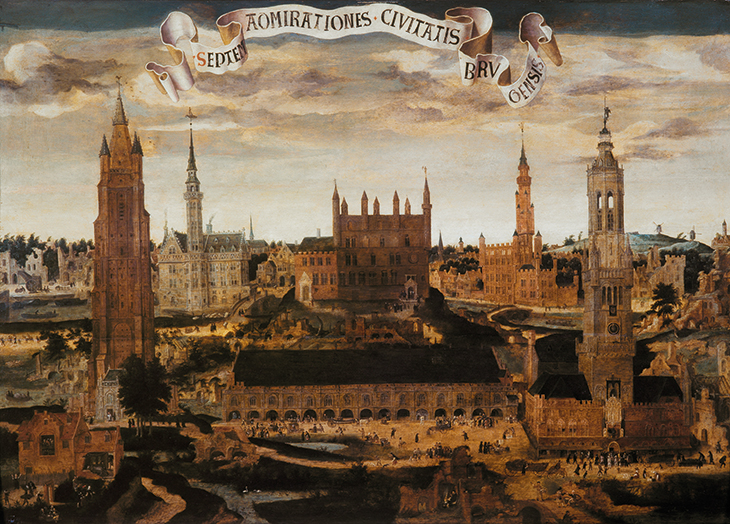
The Seven Wonders of Bruges (c. 1550-60), Pieter Claeissens the Elder. Photo: © Hugo Maertens/Musea Brugge
The nightmarish final scene of the film is shot in the courtyard of the emphatically gothic Gruuthusemuseum, with the great tower of the Church of Our Lady (Onze-Lieve-Vrouwekerk) looming overhead. As of this month, pilgrims and visitors will find a new feature in the courtyard: a thoroughly contemporary-looking (and locally controversial) glass pavilion serving as ticket hall for both the 13th-century church and the museum, which reopened in late May after a comprehensive five-year renovation, overseen by Belgian firm Noaarchitecten.
The process in fact started back in 2007, explains the German art historian Till-Holger Borchert, director of Musea Brugge, the organisation that oversees the city’s 14 municipal museums, including the Groeninge, Sint-Janshospitaal, the Gruuthuse and its neighbour, the Church of Our Lady. A smaller-scale restoration had been undertaken but, Borchert explains, ‘The extent of work that was necessary to maintain the palace in its glory was far more extensive than we had anticipated. That launched the idea that the whole museum needed to be rethought.’ Having a new, dedicated space for ticket sales and information – the courtyard pavilion – has freed up the dramatic entrance hall, with its renovated Gothic Revival decoration. As curator Aleid Hemeryck comments, ‘The ceiling is very beautiful, but when we had the ticket hall here people were busy with the practical things – they didn’t look up. For us it was really important to let the building play a main role in people’s visits.’ A key part of that has been returning colour to the interiors – Pugin red being a favourite – which had previously been whitewashed.
Borchert arrived in Bruges in 2002 to curate the city’s programme as Cultural Capital of Europe, and subsequently spent several years as chief curator of the Groeningemuseum. In his office, which looks out to the newly rebuilt Gruuthuse tower and the church spire, we sit round a coffee table printed with Jan van Eyck’s Madonna with Canon van der Paele from the Groeninge – a pleasingly irreverent touch for an expert on the Flemish Primitives who has staged important and scholarly exhibitions in the field. When it came to rationalising the display of the Gruuthuse holdings – some 20,000 items dating from the 12th to the early 20th centuries comprising tapestries, paintings, sculptures, metalwork, furniture, ceramics and more quotidian domestic objects – Borchert sought a more modern approach, notwithstanding the charm of its previous incarnation. ‘It used to be a wonderful Kunst-und Wunderkammer; I remember the first time I came, Stéphane Vandenberghe, the former curator, took me up to the attics, where there were all kinds of things in the reserves there.’ In the early 20th century the palace was known as the Musée des Dentelles because of its important lace collection; and while the new arrangement devotes a large, handsome room to Bruges lace – its walls lined with 17th-century portraits of sitters sporting Medici collars and all manner of ruffs and cuffs made of Flemish bobbin lace – the idea is for the Gruuthuse to move away from its identity as a museum of decorative arts. As Borchert explains, ‘It was an entire thinking process of trying to work the presentations into a kind of history of Bruges in several chapters; working with the collection in a more documentary way, with the object being inserted into a narrative.’
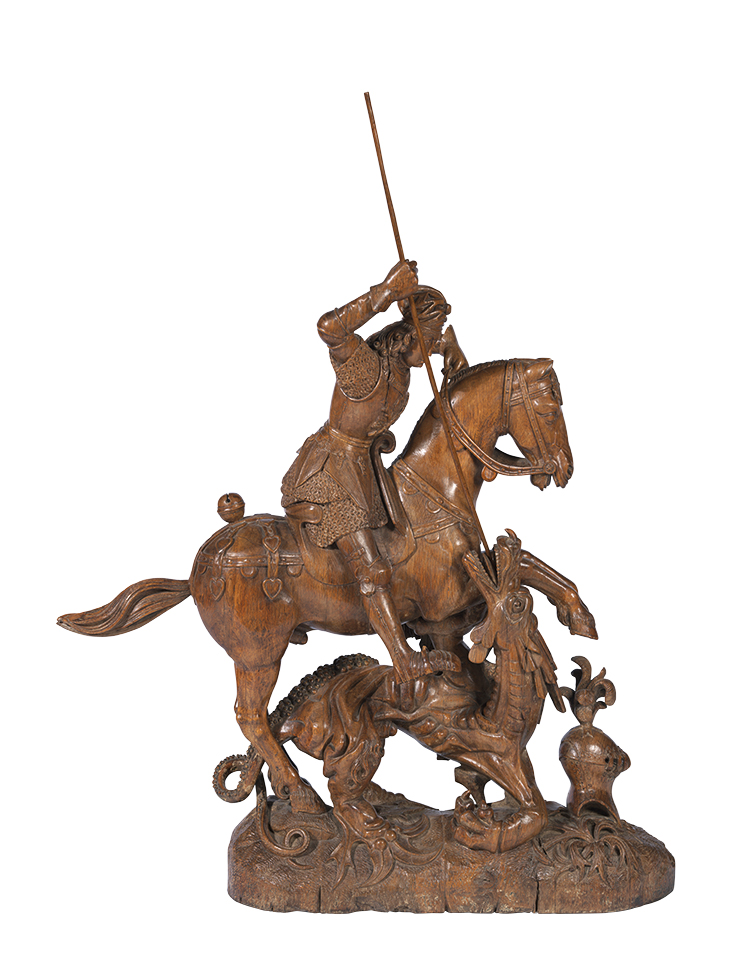
Philip the Fair as Saint George Slaying the Dragon (c. 1500), probably Flemish. Gruuthusemuseum, Bruges. Photo: KIKIRPA Brussels
Much of that narrative is provided by the museum building itself – one of the few surviving city palaces from the 15th century – which has been shaped at different stages by important figures in Bruges’ history. The first of these was Louis or Lodewijk van Gruuthuse (c. 1427–92), a statesman and military leader who served under the dukes of Burgundy, rulers of Flanders for a century before control passed to the Habsburgs in 1478. His name – and much of his wealth – came from gruut or gruit, a herbal mixture added to beer to flavour and preserve it. The family held the monopoly on its sales, and even when brewers began using hops rather than gruut, and imports of beer steadily increased, they were able to levy a tax payable on most beer brewed in or imported to Bruges. Various estates, either purchased or inherited on both his father’s and his mother’s side, generated further income for Lodewijk, who poured much of it into extending the house begun by his father on the Dijver around 1425.
Of the interiors, only a few original elements from this medieval period remain, including a vast kitchen fireplace and a set of spiral stairs. The most striking survival is an oak-panelled oratory with an oriel window looking directly into the Church of Our Lady, which allowed the Lords of Gruuthuse to hear mass from the comfort of their own home. Above the window alcove where the family would have knelt is a vaulted half-dome in wood that must have resembled a sumptuous canopy when its decoration was fresh – remaining traces, which have now been cleaned, suggest something like a damask pattern. Analysis during the recent restoration has revealed that it was decorated with tinfoil, wax and paper, then gilded and finished in blue paint on a black ground. Little polychrome carved angels support the ribs of the vault, each holding a disc that may have contained mirrored glass – purveyors of celestial light, perhaps.
Lodewijk’s two-storey private chapel, built in the 1470s, looks even more impressive from the other side, within the church itself. Its elaborately carved wood-and-stone façade keeps good company with monumental tombs of the Burgundian duke Charles the Bold and his daughter Mary – and a white marble sculpture of the Madonna and Child by Michelangelo. (Donated to the church in 1514 after being bought in Italy by two merchant brothers from Bruges, the sculpture has been looted twice, once by French revolutionaries at the end of the 18th century, and once by the Nazis in 1944.) Lodewijk made several large donations to the church, no doubt to smooth the way for his oratory, and for two free-standing tombs for himself and his wife (since destroyed).
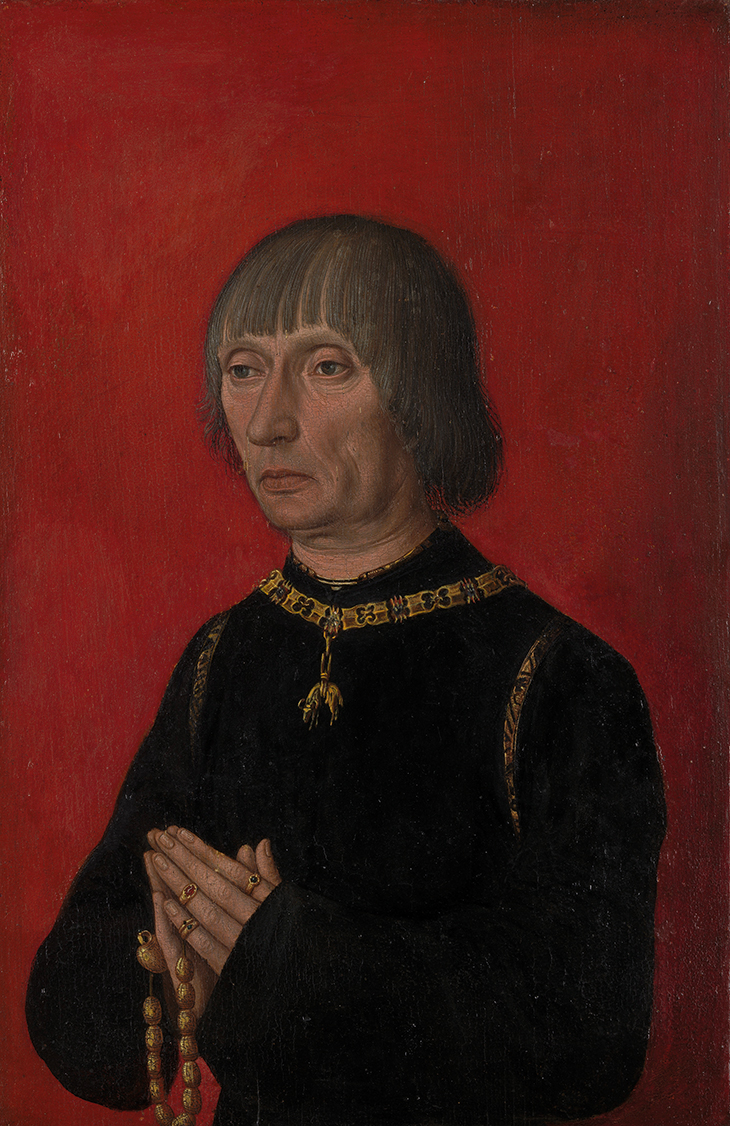
Lodewijk van Gruuthuse (c. 1480), Master of Portraits of Princes. Photo: © Musea Brugge
His portrait from c. 1480 certainly depicts him in pious mode, hands pressed together in prayer, a rosary hanging between them. Meek and monkish the man may look, but there’s enough here to assure viewers of his high status. Multiple rings adorn his fingers, while around his neck hangs the chain of the Golden Fleece – a chivalric order that Philip the Good, Duke of Burgundy, had established in Bruges in 1430 to instil loyalty in the local nobility and promote Christianity. The portrait was painted by an unidentified artist known as the Master of the Portraits of Princes, who worked in Brussels. It has compositional similarities to the portraits of Rogier van der Weyden, court artist to Philip the Good, and like Van der Weyden’s portrait of Philippe de Croy, for instance, this painting of Lodewijk was once part of a diptych, the missing panel probably depicting the Virgin and Child.
Painted on to the original gilded frame of Lodewijk’s portrait are his crest and his motto, ‘Plus et en vous’. And indeed the Flemish nobleman seems to have found these words a spur, judging by his accomplishments. His membership of the Order of the Golden Fleece was in part earned by the important role he played in quelling rebellious Ghent, whose citizens opposed a salt tax that Philip the Good had imposed in 1447. Violent conflict over the issue went on for years, until the citizens of Ghent were defeated in 1453 by an army led by Lodewijk and Count Jacques de Luxembourg. Lodewijk’s diplomatic skills saw him successfully defending Bruges’ commercial interests with the Hanseatic League in 1458, and in 1472 he was given the title Count of Winchester by Edward IV of England, in gratitude for services rendered to the House of York. Ultimately, however, his high profile was his downfall: he fell foul of the power struggles between Philip’s descendants and Maximilian of Austria, and died in disgrace at his palace in 1492.
The words ‘Plus et en vous’ can now be seen throughout the building: picked out in fresh paint, or newly cleaned stonework. These occurrences mostly date from the work of another Louis, the municipal architect and Gothic Revivalist Louis Delacenserie (1838–1909), who heavily restored the palace in the 1880s. Since being sold by the Gruuthuse family to the king of Spain at the end of the 16th century, the building had been used as a mons pietatis, or charitable lending institution, in the following century, and finally in the 1870s was bought by the city council for the Bruges archaeological society. Delacenserie was one of the society’s members, and his neo-gothic overhaul reflected a citywide penchant for historicising restorations (neoclassical stucco façades stripped away to the brick layers beneath, for instance) that harked back to an illustrious past – one that was felt to befit the new nation-state of Belgium, which had only existed since 1830.
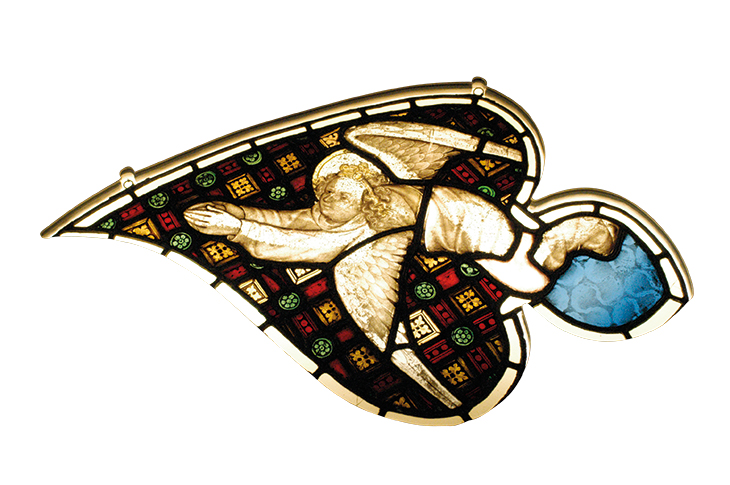
Angel (1409-10), Jan de Rynghele (and Jan Lormier?). Gruutehusemseum, Bruges. Photo: © City of Bruges
Lodewijk’s ubiquitous motto was adopted by the curators as a guiding principle when it came to condensing the collection for display, Hemeryck tells me. Each object is a key to revealing a particular facet of the city’s past: medieval stained glass and sandstone corbels from the town hall (for which Van Eyck gilded and polychromed six statues on the façade); a wooden ceiling corbel carved with three purses of gold from the premises of the Van der Buerse family – innkeepers who provided foreign merchants with a currency-exchange service, from which comes the French word bourse, for stock exchange; 16th-century maps of Bruges commissioned by the civic authorities that exaggerate the width of the city’s waterways or its proximity to the coast – this was an era when trade was threatened by the silting up of the main channel between Bruges and the North Sea (hence Rodenbach’s pulseless canals), and merchants were abandoning the city for Antwerp.
Somehow, there has also been room for new acquisitions, Borchert reveals, including tapestries – ‘some of which we bought privately, some from the trade, making a few English dealers very happy’. But the main focus of this recent overhaul has been to rationalise and celebrate what was already there. ‘The challenge,’ Borchert explains, ‘is to generate interest not only from visitors coming from abroad but also from the local population. If a museum remains static to a certain degree, then people say “Oh, I’ve seen that.” So the idea is to stir that up a bit, actually make movement, and make people aware of how rich these collections are.’
Part of that approach will involve more fluidity between the various city institutions. As Hemeryck says, ‘It’s not about the Gruuthuse collection versus the Groeninge collection; it’s about the collection of Bruges.’ Paintings from the latter museum’s reserves – that portrait of Lodewijk for one – will go on permanent or temporary display at the Gruuthuse. More, too, can be made of the city’s important manuscript collection, much of it held by Bruges Public Library. Lodewijk van Gruuthuse was second only to the dukes of Burgundy in commissioning beautifully elaborate illuminations from the specialist workshops of Bruges and Ghent. Chief among these are incunabula made by Colard Mansion, who worked with William Caxton in Bruges to produce the first printed books in English. (So rich was Lodewijk’s collection that after his death a large part of it found its way into the possession of the French king, and is now held at the Bibliothèque nationale de France.) Mansion’s best-known publication is the French-language Ovide moralisé (1484), a Christianised version of the Metamorphoses.
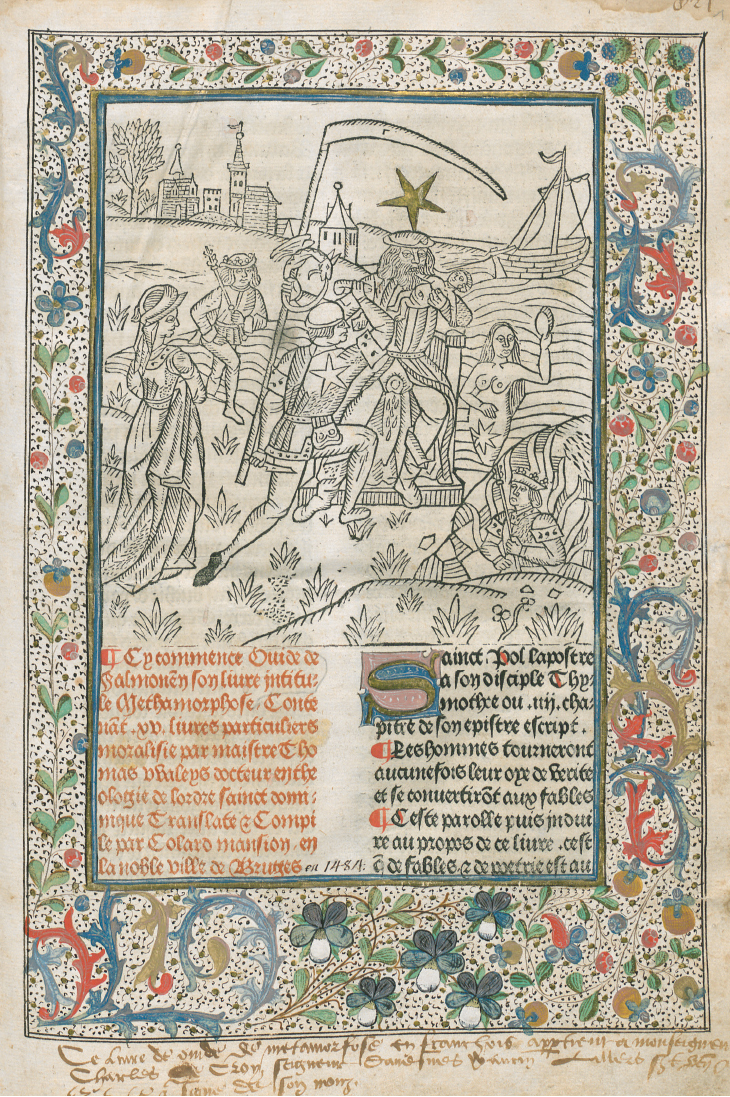
The Castration of Saturn from ‘Ovide moralisé’ (1484), Colard Mansion. Openbare Bibliotheek, Bruges. Photo: © Musea Brugge
An exhibition devoted to Colard Mansion at the Groeningemuseum last year represents the kind of project that Borchert hopes to repeat, bringing experts in the field to Bruges, actively fostering and furthering research on lesser known subjects. Avoiding the pitfalls of purely commercial exhibitions is something about which he feels strongly. ‘Why, every year, do we need “the biggest Rembrandt show ever”? For me as a visitor, there is a limit to what I can fathom new research can bring to one particular artist. Whereas hundreds of other subjects remain unexplored and literally unseen and unappreciated. I think our mission – should we choose to accept it – is, if we have things in storage that we deem to be important, it’s our duty to bring them to the public and make them relevant.’
Borchert and his colleagues have their work cut out in this respect, with new material unearthed constantly. Recently they were called in to safeguard the holdings of a convent, which was moving home. ‘It was the order that used to run the Sint-Janshospitaal; there was a substantial number of silver reliquaries from the 17th and 18th centuries that had to be very quickly moved. I think 50 per cent of historical Bruges is still made up of these congregations.’ As for the Gruuthusemuseum, Borchert says its first task after reopening is to decide how to make accessible to the public the ‘hundreds and hundreds of silver and tin pieces’ still in storage – something their new, temporary exhibition space in the old attics may be able to help with. ‘It’s unacceptable to have this material in the reserves for the long term. It needs to be out there.’
Light shone into dark corners, then, is something we can look forward to from this city’s museums – leaving room, one trusts, for a bit of that atmospheric, gothic gloomth that Bruges does so well.
From the June 2019 issue of Apollo. Preview the current issue and subscribe here.
Unlimited access from just $16 every 3 months
Subscribe to get unlimited and exclusive access to the top art stories, interviews and exhibition reviews.

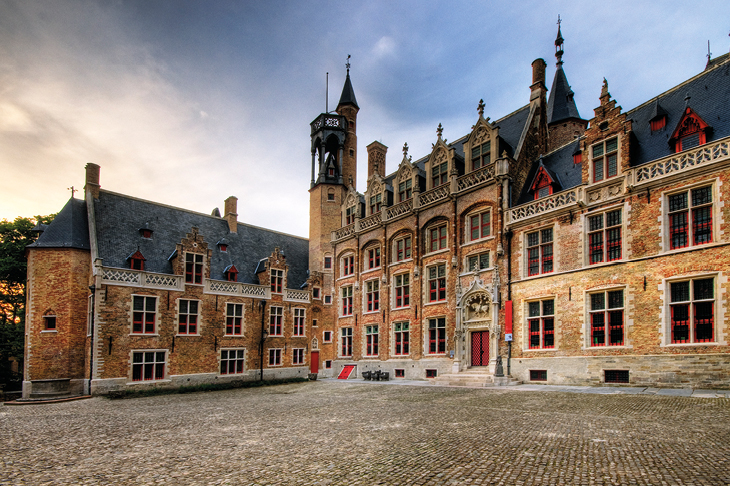
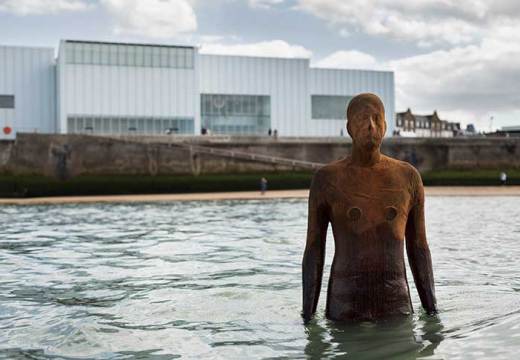
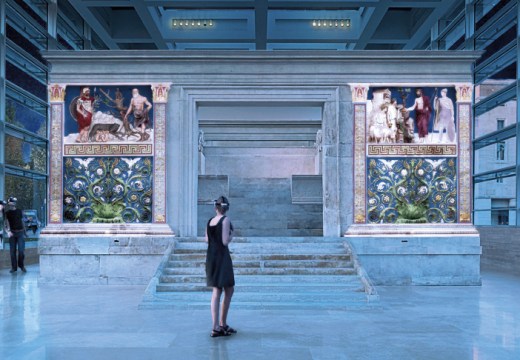
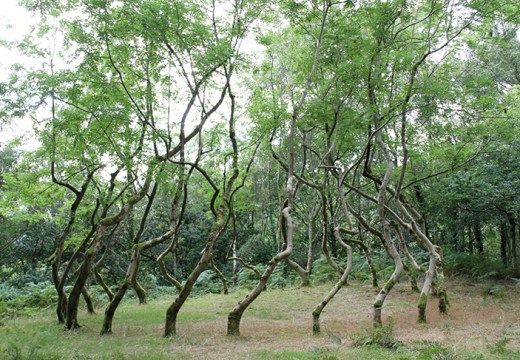









![Masterpiece [Re]discovery 2022. Photo: Ben Fisher Photography, courtesy of Masterpiece London](http://www.apollo-magazine.com/wp-content/uploads/2022/07/MPL2022_4263.jpg)
Has the Fitzwilliam lost the hang of things?